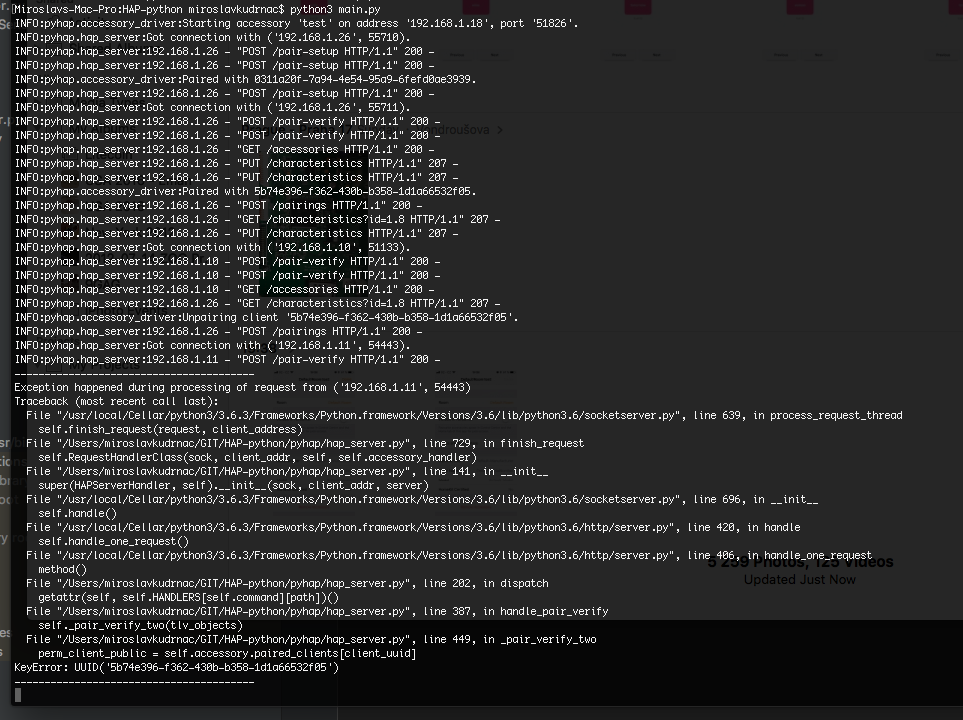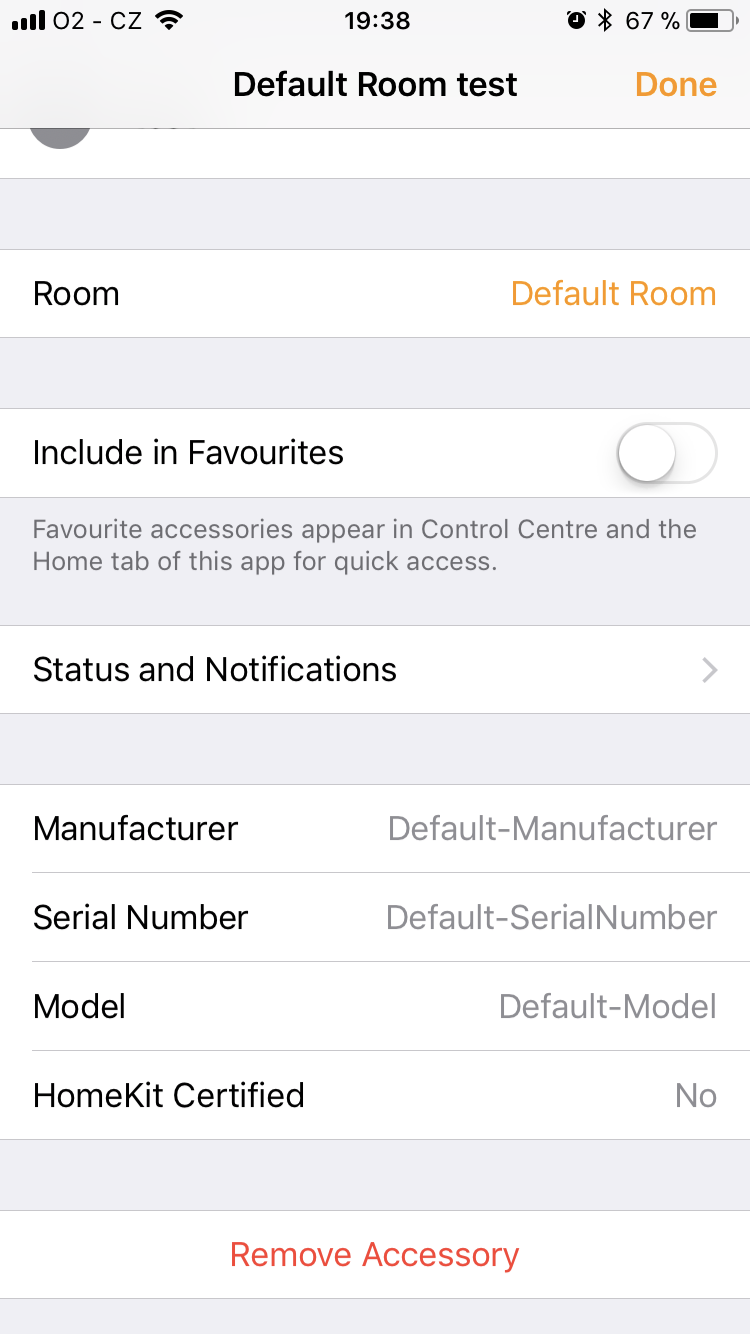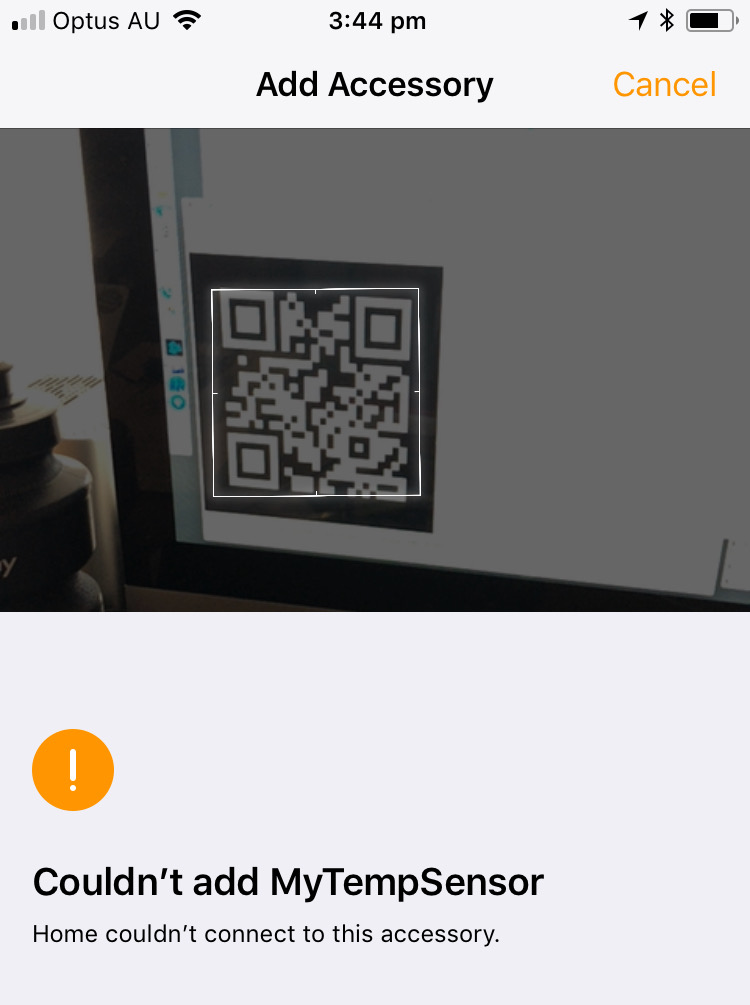HomeKit Accessory Protocol implementation in python 3. With this project, you can integrate your own smart devices and add them to your iOS Home app. Since Siri is integrated with the Home app, you can start voice-control your accessories right away.
Main features:
- Camera - HAP-python supports the camera accessory from version 2.3.0!
- asyncio support - You can run various tasks or accessories in the event loop.
- Out of the box support for Apple-defined services - see them in the resources folder.
- Secure pairing by just scanning the QR code.
- Integrated with the home automation framework Home Assistant.
The project was developed for a Raspberry Pi, but it should work on other platforms. To kick-start things,
you can open main.py or busy_home.py, where you will find some fake accessories.
Just run one of them, for example python3 busy_home.py, and you can add it in
the Home app (be sure to be in the same network).
Stop it by hitting Ctrl+C.
There are example accessories as well as integrations with real products in the accessories folder. See how to configure your camera in camera_main.py.
As of version 3.5.1, HAP-python no longer supports python older than 3.6, because we are moving to asyncio. If your platform does not have a compatible python out of the box, you can install it manually or just use an older version of HAP-python.
As a prerequisite, you will need Avahi/Bonjour installed (due to zeroconf package). On a Raspberry Pi, you can get it with:
$ sudo apt-get install libavahi-compat-libdnssd-dev
avahi-utils may also fit the bill. Then, you can install with pip3 (you will need sudo or --user for the install):
$ pip3 install HAP-python[QRCode]This will install HAP-python in your python packages, so that you can import it as pyhap. To uninstall, just do:
$ pip3 uninstall HAP-python
A typical flow for using HAP-python starts with implementing an Accessory. This is done by subclassing Accessory and putting in place a few details (see below). After that, you give your accessory to an AccessoryDriver to manage. This will take care of advertising it on the local network, setting a HAP server and running the Accessory. Take a look at main.py for a quick start on that.
from pyhap.accessory import Accessory, Category
import pyhap.loader as loader
class TemperatureSensor(Accessory):
"""Implementation of a mock temperature sensor accessory."""
category = Category.SENSOR # This is for the icon in the iOS Home app.
def __init__(self, *args, **kwargs):
"""Here, we just store a reference to the current temperature characteristic and
add a method that will be executed every time its value changes.
"""
# If overriding this method, be sure to call the super's implementation first.
super().__init__(*args, **kwargs)
# Add the services that this Accessory will support with add_preload_service here
temp_service = self.add_preload_service('TemperatureSensor')
self.temp_char = temp_service.get_characteristic('CurrentTemperature')
# Having a callback is optional, but you can use it to add functionality.
self.temp_char.setter_callback = self.temperature_changed
def temperature_changed(self, value):
"""This will be called every time the value of the CurrentTemperature
is changed. Use setter_callbacks to react to user actions, e.g. setting the
lights On could fire some GPIO code to turn on a LED (see pyhap/accessories/LightBulb.py).
"""
print('Temperature changed to: ', value)
@Accessory.run_at_interval(3) # Run this method every 3 seconds
# The `run` method can be `async` as well
def run(self):
"""We override this method to implement what the accessory will do when it is
started.
We set the current temperature to a random number. The decorator runs this method
every 3 seconds.
"""
self.temp_char.set_value(random.randint(18, 26))
# The `stop` method can be `async` as well
def stop(self):
"""We override this method to clean up any resources or perform final actions, as
this is called by the AccessoryDriver when the Accessory is being stopped.
"""
print('Stopping accessory.')When you are working with tightly coupled characteristics such as "On" and "Brightness," you may need to use a service callback to receive all changes in a single request.
With characteristic callbacks, you do now know that a "Brightness" characteristic is about to be processed right after an "On" and may end up setting a LightBulb to 100% and then dim it back down to the expected level.
from pyhap.accessory import Accessory
from pyhap.const import Category
import pyhap.loader as loader
class Light(Accessory):
"""Implementation of a mock light accessory."""
category = Category.CATEGORY_LIGHTBULB # This is for the icon in the iOS Home app.
def __init__(self, *args, **kwargs):
"""Here, we just store a reference to the on and brightness characteristics and
add a method that will be executed every time their value changes.
"""
# If overriding this method, be sure to call the super's implementation first.
super().__init__(*args, **kwargs)
# Add the services that this Accessory will support with add_preload_service here
serv_light = self.add_preload_service('Lightbulb')
self.char_on = serv_light.configure_char('On', value=self._state)
self.char_brightness = serv_light.configure_char('Brightness', value=100)
serv_light.setter_callback = self._set_chars
def _set_chars(self, char_values):
"""This will be called every time the value of the on of the
characteristics on the service changes.
"""
if "On" in char_values:
print('On changed to: ', char_values["On"])
if "Brightness" in char_values:
print('Brightness changed to: ', char_values["Brightness"])
@Accessory.run_at_interval(3) # Run this method every 3 seconds
# The `run` method can be `async` as well
def run(self):
"""We override this method to implement what the accessory will do when it is
started.
We set the current temperature to a random number. The decorator runs this method
every 3 seconds.
"""
self.char_on.set_value(random.randint(0, 1))
self.char_brightness.set_value(random.randint(1, 100))
# The `stop` method can be `async` as well
def stop(self):
"""We override this method to clean up any resources or perform final actions, as
this is called by the AccessoryDriver when the Accessory is being stopped.
"""
print('Stopping accessory.')The Camera accessory implements the HomeKit Protocol for negotiating stream settings,
such as the picture width and height, number of audio channels and others.
Starting a video and/or audio stream is very platform specific. Because of this,
you need to figure out what video and audio settings your camera supports and set them
in the options parameter that is passed to the Camera Accessory. Refer to the
documentation for the Camera contructor for the settings you need to specify.
By default, HAP-python will execute the ffmpeg command with the negotiated parameters
when the stream should be started and will terminate the started process when the
stream should be stopped (see the default: Camera.FFMPEG_CMD).
If the default command is not supported or correctly formatted for your platform,
the streaming can fail.
For these cases, HAP-python has hooks so that you can insert your own command or implement the logic for starting or stopping the stream. There are two options:
-
Pass your own command that will be executed when the stream should be started.
You pass the command as a value to the key
start_stream_cmdin theoptionsparameter to the constuctor of theCameraAccessory. The command is formatted using the negotiated stream configuration parameters. For example, if the negotiated width is 640 and you passfoo start -width {width}, the command will be formatted asfoo start -width 640.The full list of negotiated stream configuration parameters can be found in the documentation for the
Camera.startmethod. -
Implement your own logic to start, stop and reconfigure the stream.
If you need more flexibility in managing streams, you can directly implement the
Cameramethodsstart,stopandreconfigure. Each will be called when the stream should be respectively started, stopped or reconfigured. The start and reconfigure methods are given the negotiated stream configuration parameters.Have a look at the documentation of these methods for more information.
Finally, if you can take snapshots from the camera, you may want to implement the
Camera.snapshot method. By default, this serves a stock photo.
This is a quick way to get HAP-python to run at boot on a Raspberry Pi. It is recommended
to turn on "Wait for network" in raspi-config. If this turns to be unreliable, see
this.
Copy the below in /etc/systemd/system/HAP-python.service (needs sudo).
[Unit]
Description = HAP-python daemon
Wants = pigpiod.service # Remove this if you don't depend on pigpiod
After = local-fs.target network-online.target pigpiod.service
[Service]
User = lesserdaemon # It's a good idea to use some unprivileged system user
# Script starting HAP-python, e.g. main.py
# Be careful to set any paths you use, e.g. for persisting the state.
ExecStart = /usr/bin/python3 /home/lesserdaemon/.hap-python/hap-python.py
[Install]
WantedBy = multi-user.target
Test that everything is fine by doing:
> sudo systemctl start HAP-python
> systemctl status HAP-python
> sudo journalctl -u HAP-python # to see the output of the start up script.
> sudo systemctl stop HAP-pythonTo enable or disable at boot, do:
> sudo systemctl enable HAP-python
> sudo systemctl disable HAP-pythonIf you are running HAP-python on a Raspberry Pi, you may want to add a
Shutdown Switch to your Home. This is a
Switch Accessory, which, when triggered, executes sudo shutdown -h now, i.e.
it shutdowns and halts the Pi. This allows you to safely unplug it.
For the above to work, you need to enable passwordless /sbin/shutdown to whichever
user is running HAP-python. For example, do:
$ sudo visudo # and add the line: "<hap-user> ALL=NOPASSWD: /sbin/shutdown".Some HAP know-how was taken from HAP-NodeJS by KhaosT.
I am not aware of any bugs, but I am more than confident that such exist. If you find any, please report and I will try to fix them.
Suggestions are always welcome.
Have fun!





